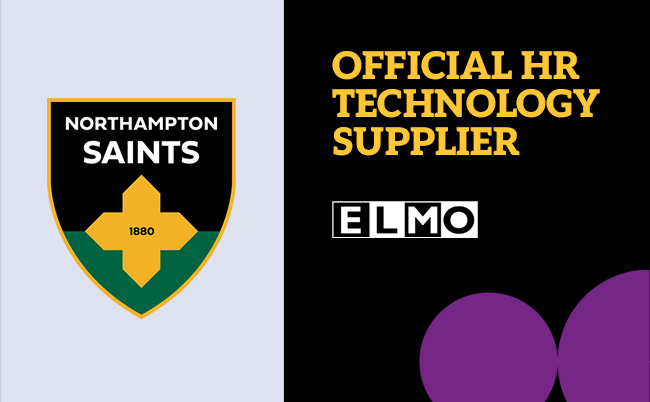How to Identify Employee Training Needs
As the Australian economy continues to evolve, businesses are facing an increasingly competitive talent landscape.

Businesses today face an increasingly competitive talent landscape. With wage inflation hitting 8.2% in 2023 and 5.4% in 2024, it’s clear that external hiring is not the simple solution it once was.
Instead, many are turning to learning and development (L&D) to upskill their existing workforce and safeguard their talent strategy for the future. Done right, it can improve the productivity of your workforce and give your existing employees valuable reasons to stay with the company in the long term. But that’s easier said than done.
Here’s the challenge: HR teams have a limited budget available and they need to decide where best to assign it to achieve the optimal result. At the same time, you’ve got to balance the competing priorities of teams across the organisation, without necessarily being an expert on those technical skills yourself.
So how do you do that? Here’s what you need to know.
Why is it important to identify employee training needs?
Before we dive into the process of identifying employee training needs, let’s first understand why it is essential.
Improving employee performance
Naturally, understanding more about your employees’ knowledge and skills gaps can help you better decide how to fill them. This can have a significant impact on performance and profits. In fact, as many as 67% of L&D professionals agree that the function has a direct positive impact on revenue.
Upskilling your employees can help you create a more effective, productive and knowledgeable workforce.
Retaining top talent
According to recent Ipsos research, 74% of employees say they want to learn new skills to keep up with advances in their industry. Nonetheless, only 54% say they’ve been given sufficient opportunities to do so. At the same time, a majority of employees say learning and development is a vital factor in choosing an employer.
Investing in employees’ training can therefore make a huge difference to your employee experience. If you can demonstrate that your people can learn, grow and advance in their careers with you, there’s a much better chance that they’ll stay in the long run.
Identify external hiring needs
The best way to understand what additional skills you need is to first get an idea of those you
already have. To do that, you need a decent idea of employees’ individual skills. Once you’ve identified the biggest gaps, you can work out whether the best approach is to train or hire.
How to identify employee training needs
Now that we understand the importance of identifying employee training needs let’s discuss the steps you can take to do so effectively.
Conduct a training needs assessment
The first stage is to conduct a training needs assessment, determining your employees’ skills and addressing the most important gaps.
You can do this via surveys, interviews and performance evaluations. It’s also helpful to ask line managers to compile information on their direct reports’ skills, targets and progress.
This will help you understand the specific areas where training and development are most needed.
Analyse job descriptions and performance reviews
This might seem simple on the surface, but it can be more challenging than it looks. That’s because job descriptions at most companies are out of date. They tend not to be updated as employees gain new skills, responsibilities and even job titles.
It can be helpful, therefore, to ask all line managers to submit updated versions of the job descriptions. You could also ask them to include a more qualitative assessment of the direct report’s strengths, weaknesses and skills.
Seek feedback from employees
Your employees are a valuable source of information when it comes to identifying training needs. They can provide insights into the challenges they face in their roles and the skills they feel they need to develop.
Consider conducting surveys or holding focus groups to gather feedback. This will help you identify training needs and show your employees that their opinions and development are valued.
Analyse industry trends and competitor strategies
It is also essential to keep an eye on industry trends and competitor strategies when identifying employee training needs. This will keep your employees’ skills relevant and competitive.
Keep up with industry and competitor trends to spot skill gaps and address them through training.
Find out more: ELMO Survey can help you start a conversation with your workforce.
Analyse industry trends and competitor strategies
It is also essential to keep an eye on industry trends and competitor strategies when identifying training needs. This will keep your employees’ skills relevant and competitive.
There are multiple ways to do this:
- First, follow all major competitors on LinkedIn, YouTube and other relevant social channels. This will give you an idea of what they’re working on and where the industry is moving.
- Then, subscribe to industry publications wherever possible. This will provide an understanding of the biggest new developments, what to look out for and which skills therefore need to be prioritised.
- Keep an eye on where employees are going. Employees naturally want to improve their skills and try new things and often they’ll end up moving to a new role if they can’t do that in their current one. Therefore, it can be useful to keep an eye on where former employees go after they move on from the company. This can help you identify what opportunities, skills and responsibilities you could provide to stop other employees making the same decision in future.
Use technology to track performance and identify gaps
If you’re using a specific L&D software tool, you may be able to identify key training needs from the data it offers. Generally, learning management systems (LMS) and other similar products can offer analytics on which training courses people are interacting with.
While this is useful, it’s perhaps more relevant to understand what they’re not using. What happens if the team is all focusing on getting technical qualifications, but there’s a real need for management skills in the company? This suggests management training is a key strategic L&D priority.
LMS tools can also help you track the effectiveness of training programmes and make adjustments as needed to ensure your employees are getting the most out of their training.
Examples of employee training needs
Now that we have discussed how to identify employee training needs let’s look at some common examples of training needs that may arise within a company.
Technical skills training
With technology constantly evolving, employees may need training to keep up with the latest tools and software used in their roles. This could include training on new software, programming languages or other technical skills. Crucially, this training should be continuous and iterative, since developments
in an industry are constantly evolving.
Soft skills training
This involves communication skills, time management, leadership and more. Businesses often underestimate how important these skills are, which becomes a particular issue when individual contributors are first promoted to management positions. Generally, they need a whole new set of soft skills to be effective in these roles.
As many as 85% of new managers don’t get any training before being a manager and 59% don’t feel they’re supported in their new role.
Compliance training
Most companies have a certain set of training courses that all employees need to complete. That can include data protection regulations, cybersecurity training or other crucial compliance policies. Providing training on these regulations and requirements is crucial to ensure that your employees are following the necessary protocols.
Sales and customer service training
This is vital training for any customer or client-facing employees. Important skills here could include training on sales techniques, customer service best practices and conflict resolution. This training has a direct impact on your ability to attract and retain customers, so it’s crucial to get it right.
Diversity and inclusion training
Many organisations are also increasingly interested in providing diversity and inclusion training. This can involve unconscious bias training, as well as encouraging managers to show equality across hiring, promotions and how they manage teams.
Cross-cultural training can foster understanding and respect among employees, promoting a more inclusive and harmonious workplace.
Read more: Removing Unconscious Bias from the Hiring Process
A strategic approach to align training needs
Identifying training needs is the first step in developing a successful training programme. But it’s also important to make sure those priorities are aligned with both the wider company goals and the available training budget you have available.
To do that, it’s helpful to consider the following factors:
- Impact: Which training needs will have the greatest impact on the company’s bottom line?
- Urgency: Which priorities are most important to address in the short term?
- Practicality: What skills gaps are the most feasible to address with the available resources?
Once you have considered these factors, you can use a variety of tools and techniques to align your training needs. Some common methods include:
- Pareto analysis: This method identifies the 80% of training needs that will have the greatest impact on the business goals. To do this, give each option a numerical score based on its potential business impact. The higher the score, the bigger the priority.
- The Eisenhower matrix: Categorise training needs based on their urgency and importance. See below section for further details.
- The MoSCoW method: Based on four main categories, this method lets you classify training needs by priority: Must have, Should have, Could have and Won’t have.
By following a strategic approach to aligning training needs, you can ensure that your training programmes are focused on the most critical needs of your company. This will help to maximise the return on investment for your training initiatives.
Eisenhower in action: How to choose the right training priorities
The models above all aim to identify and prioritise the tasks that will have the greatest value and impact on the business. In truth, they’re all helpful ways of doing this and there’s not a great deal to choose between them.
But to focus on how it works in action, let’s look deeper into one of these options: the Eisenhower matrix.

As you can see, the model breaks your options down by urgency and importance. You can loosely define these as how critical it is in the short term and long term, respectively.
The best way to categorise skills is to work with line managers and executives to identify their priorities and map them onto a model like this. Ultimately, the Head of Sales is going to understand their own team’s skills gaps better than the HR team, which is why it needs to be a collaborative effort.
But HR is the only team with a strategic view over the whole workforce. While the Head of Sales can decide what their team needs, they can’t prioritise that against the needs of the Dev Team or Marketing Team. That’s for you and the C-Suite to decide.
Getting the right skills for the future
It’s clear that L&D has a clear positive impact on the success of your business and the talent of your workforce.
In short, L&D pays off. But getting it right isn’t always easy. It requires providing training and courses on a broad range of different skillsets and qualifications, which the HR team aren’t necessarily experts on themselves. It also requires a balance of individual and business goals, as well as standardised and mandatory training courses.
With ELMO Learning Management, you can make this task easy. Here’s how:
- Build bespoke eLearning modules.
- Access over 400 courses from the ELMO course and video library.
- Comprehensive reporting for managers to track compliance training.
- Custom reporting that lets you gather data on your own unique needs.
Want to find out more? Explore ELMO Learning Management.
 HR Core
HR Core 









